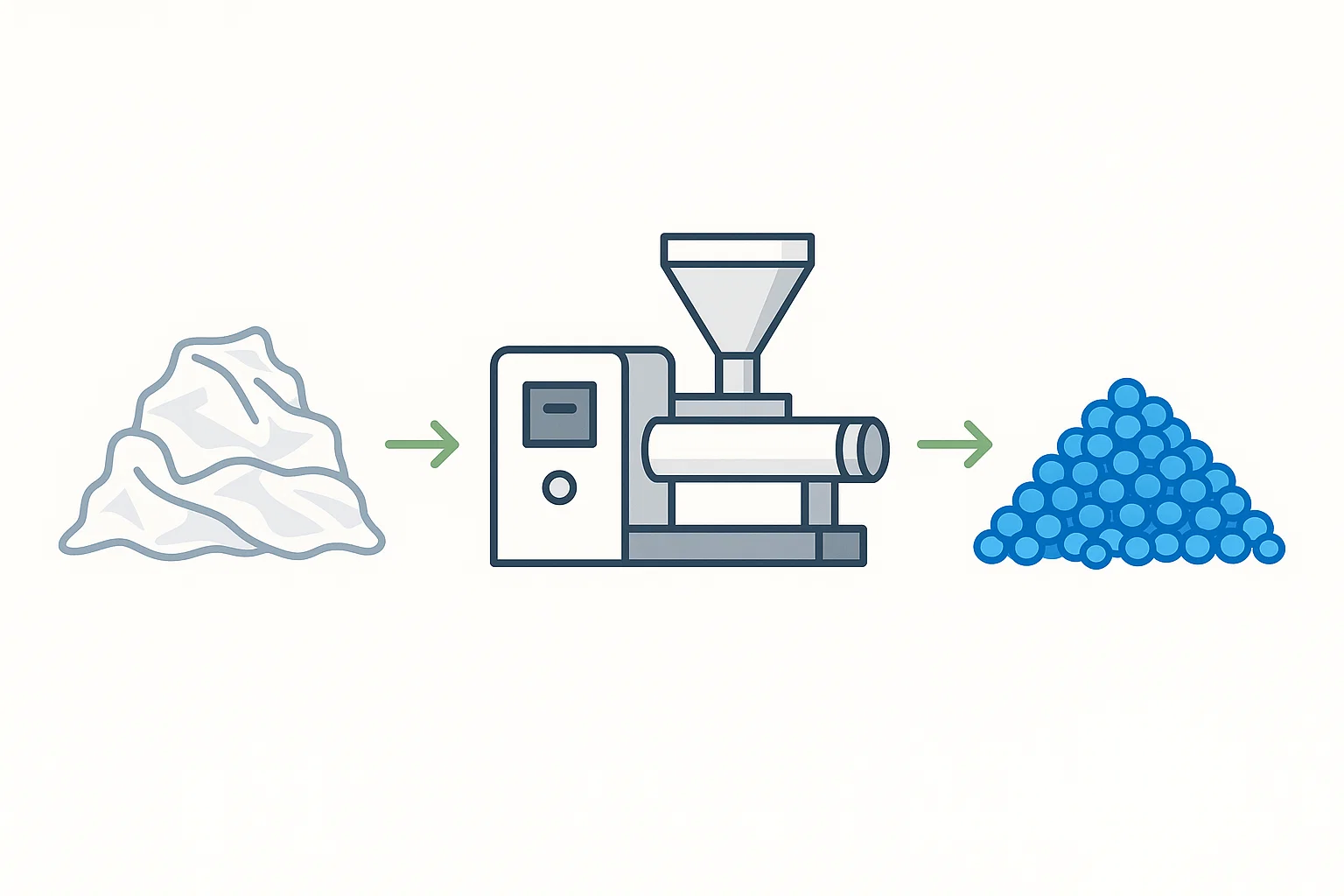How to Choose the Right Equipment to Maximise Profitability and Sustainability
In an era where environmental responsibility and economic efficiency are paramount, the recycling of plastic film has transitioned from a niche practice to a mainstream industrial necessity. For manufacturers, recyclers, and industrial leaders across Europe and the USA, transforming plastic film waste into a valuable commodity is no longer just a green initiative—it’s a strategic business decision.
However, navigating the complex market of recycling machinery can be daunting. Making the right investment is critical to ensuring a high return, operational efficiency, and the production of high-quality recycled materials. This comprehensive guide is designed to equip you with the knowledge needed to select the perfect plastic film recycling equipment for your business needs in 2025 and beyond. As specialists in the field, we at Energycle Machine understand that an informed choice is the foundation of a successful recycling operation.
Why Recycling Plastic Film is More Critical Than Ever
The case for recycling plastic film is twofold, striking a powerful balance between environmental stewardship and economic advantage.
Environmental Imperatives:
Plastic films, particularly those made from Polyethylene (PE) and Polypropylene (PP), are ubiquitous. By recycling this material, businesses can directly contribute to:
- Reducing landfill burden.
- Conserving non-renewable resources (crude oil).
- Lowering the carbon footprint associated with virgin plastic production.
- Preventing plastic pollution in our natural environment.
Economic Opportunities:
Waste is a resource in the wrong place. By investing in recycling technology, you can:
- Create a valuable output—high-quality plastic pellets—that can be sold to manufacturers.
- Significantly reduce or eliminate waste disposal costs.
- Achieve corporate sustainability goals (CSGs), enhancing your brand’s reputation.
- Secure your supply chain by generating a source of recycled raw material.
Understanding Recyclable Film Types
The type of film you plan to process is the single most important factor. The most commonly recycled films include:
- Low-Density Polyethylene (LDPE): Used for carrier bags, food packaging films, and bin liners.
- Linear Low-Density Polyethylene (LLDPE): Used for pallet stretch wrap, agricultural films, and bubble wrap.
- High-Density Polyethylene (HDPE): Found in thicker shopping bags and packaging liners.
- Polypropylene (PP): Used for food packaging (e.g., crisp packets) and woven bags (FIBCs).
Your input material might be post-consumer (often more contaminated) or post-industrial (typically cleaner). Identifying your primary feedstock is the first step towards designing an effective recycling system.
The Complete Film Recycling Process: From Waste to Pellet
A state-of-the-art plastic film recycling line is an integrated system of components. The goal is to transform loose, contaminated film into clean, dense, and uniform pellets ready for reuse.
1. Size Reduction
The bulky film is fed into a shredder or granulator, which chops the material into smaller, uniform flakes for effective cleaning.
2. Washing & Separation
A critical stage where flakes are rigorously scrubbed and separated from contaminants like dirt, paper, and food residue in float-sink tanks.
3. Dewatering & Drying
Moisture is removed first mechanically (centrifugal dryer) and then thermally (hot air system), which is vital for high-quality extrusion.
4. Extrusion & Pelletising
Clean, dry flakes are melted, filtered, and cut into uniform pellets—the final, saleable product.
How to Choose the Right Machine for Your Business
Selecting the right equipment requires a careful analysis of your specific operational context. A one-size-fits-all solution rarely delivers optimal results. Ask yourself:
- What is my input material? The level of contamination dictates the intensity of the required washing line.
- What is my desired output capacity? This directly influences the size, power, and cost of the machinery.
- What quality is required for the final pellets? Higher quality demands more advanced filtration and degassing.
- What are my operational constraints? Consider available space, power, water, and labour.
How to Choose a Reliable Supplier
Your equipment is only as good as the company that supplies and supports it. When evaluating suppliers, look for these key attributes:
- Technical Expertise and Customisation: A top-tier supplier acts as a consultant. At Energycle Machine, we engineer a tailored solution, adjusting everything from the plastic granulator to the washing line for peak performance.
- Proven Track Record: A credible supplier can provide case studies. Energycle Machine has a strong portfolio of successful projects across Europe and the USA.
- Build Quality and Durability: Scrutinise the construction. Our machines are built for longevity and minimal downtime, ensuring your investment in systems like our extrusion pelletisers and dewatering and drying lines is protected.
- Comprehensive After-Sales Support: The relationship shouldn’t end upon delivery. We provide ongoing technical support, training, and readily available spare parts.
Analysing Your Return on Investment (ROI)
Investing in a plastic film recycling line is a significant capital expenditure, but the potential ROI is compelling. While a lower-cost machine may seem attractive initially, a high-quality, efficient system from a reputable supplier like Energycle Machine often delivers a far superior long-term ROI through higher uptime, lower energy consumption, and a higher-grade final product.
Frequently Asked Questions (FAQ)
How much space is required for a complete plastic film recycling line?
This depends entirely on the capacity. A smaller line (e.g., 300-500 kg/hr) might require 300-500 square metres, while a larger industrial line (1000+ kg/hr) could need 1000 square metres or more. We provide detailed layout plans as part of our consultation process.
What is the main difference in processing post-industrial vs. post-consumer film?
Post-industrial film is generally cleaner and more uniform, often requiring a less intensive washing line. Post-consumer film is typically more contaminated with organic matter, paper, and dirt, necessitating a more robust and comprehensive washing and separation system.
Can your machines handle heavily printed or multi-layer films?
Our systems can be configured to handle heavily printed films effectively. For multi-layer films (e.g., PE/PA), it is more complex. While our systems can process them, the final pellet will be a mixed material. We recommend discussing these specific materials with our technical team.
How long does it typically take to see a return on investment?
The ROI period varies widely based on factors like investment cost, operating costs, and the market price for recycled pellets. However, with an efficient system, many of our clients see a positive return within 2 to 4 years.
Take the Next Step Towards a Profitable Recycling Operation
Turning plastic waste into a valuable asset is a powerful move for any forward-thinking business. With the right technology and the right partner, you can build a new revenue stream while making a tangible, positive impact on the environment.
Request a Personalised Quote


